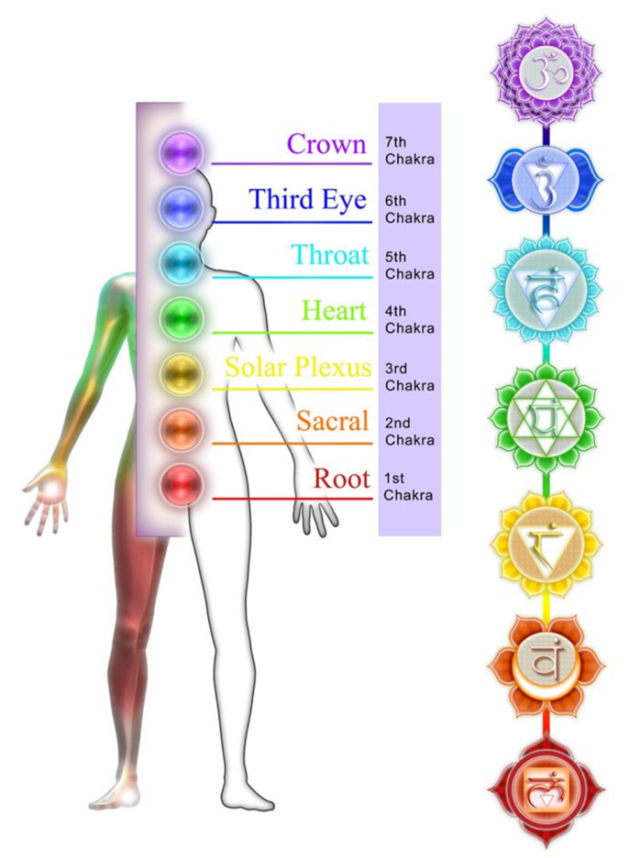Chakras are the energy centers of our body that play a crucial role in our overall wellbeing, influencing our physical, emotional, and spiritual health. The concept of chakras has been traced back to ancient India. Although there are numerous energy centers in our body, there are seven primary chakras that are located along the spine and have specific functions.
In this article, we will explore the basics of chakras, their functions, and how to balance them to improve overall health and wellbeing.
Introduction to Chakras
Chakras are energy centers located within the body that govern different aspects of our physical, emotional, and spiritual well-being. These energy centers are believed to be connected to our consciousness and are responsible for maintaining the flow of energy throughout our body.
What are Chakras?
Chakras are spinning wheels of energy located throughout the body, from the base of the spine to the crown of the head. Each chakra is associated with a specific color, sound, and function and governs different aspects of our physical and emotional well-being.
History of Chakras
The concept of chakras originated in ancient India over 2,000 years ago and was first mentioned in the Vedas, a collection of ancient Hindu texts. The word “chakra” is Sanskrit for “wheel” or “disk” and refers to the spinning energy centers within the body that regulate the flow of energy.

The seven chakras are:
Root Chakra
The color representing this chakra is Red. Located at the base of the spine, the root chakra is associated with grounding, stability, and our basic needs for survival, such as food, shelter, and safety.
Sacral Chakra
The color representing this chakra is Orange. The sacral chakra, located just below the navel, is associated with creativity, sexuality, and emotional well-being.
Solar Plexus Chakra
The color representing this chakra is Yellow. The solar plexus chakra is located in the upper abdomen and is associated with self-esteem, personal power, and confidence.
Heart Chakra
The color representing this chakra is Green. Located in the center of the chest, the heart chakra is associated with love, compassion, and emotional balance.
Throat Chakra
The color representing this chakra is Blue. The throat chakra is located in the throat and is associated with communication, self-expression, and authenticity.
Third Eye Chakra
The color representing this chakra is Indigo. Located in the center of the forehead, the third eye chakra is associated with intuition, imagination, and spiritual insight.
Crown Chakra
The color representing this chakra is Violet. The crown chakra, located at the top of the head, is associated with spiritual awareness, connection to the divine, and a sense of purpose.
Causes of Chakra Imbalances
Chakra imbalances can be caused by various factors, including stress, trauma, illness, and negative thought patterns. When a chakra is blocked or out of balance, it can manifest as physical symptoms or mental and emotional distress.
Signs of Chakra Imbalances
Signs of chakra imbalances may include physical symptoms such as fatigue, headaches, and digestive issues, as well as emotional symptoms such as anxiety, depression, and mood swings.
Techniques for Balancing Chakras
Meditation
Meditation is a powerful tool for balancing the chakras. By focusing on the breath and visualizing the flow of energy through each chakra, we can remove blockages and restore balance.
Aromatherapy
Essential oils can be used to stimulate and balance the chakras. For example, lavender can be used to balance the crown chakra, while patchouli can be used to balance the root chakra.
Crystal Healing
Crystals and gemstones are believed to have healing properties that can help to balance the chakras. For example, amethyst is said to balance the crown chakra, while citrine is said to balance the solar plexus chakra.
Sound Therapy
Sound therapy, such as using singing bowls or tuning forks, can help to balance the chakras by producing specific frequencies that resonate with each chakra.
Physical Benefits
Chakra balancing can help improve physical health by increasing the flow of energy to various organs and systems within the body. It can also help alleviate physical ailments such as headaches, joint pain, and digestive issues.
Mental and Emotional Benefits
Chakra balancing can also help improve mental and emotional health by reducing stress, anxiety, and depression. It can also help increase feelings of happiness, clarity, and emotional stability.
What are the seven chakras?
The seven chakras are energy centers located along the spine that have specific functions, ranging from physical survival to spiritual connection. They are the root chakra, sacral chakra, solar plexus chakra, heart chakra, throat chakra, third eye chakra, and crown chakra.
What are the signs of chakra imbalances?
The signs of chakra imbalances can vary depending on which chakra is affected. Some common signs include physical symptoms such as pain or illness, emotional symptoms such as anxiety or depression, and behavioral symptoms such as addiction or compulsive behavior.
Can chakra healing replace medical treatment?
No, chakra healing should not be used as a substitute for medical treatment. It can be used as a complementary practice to support overall health and wellness, but any serious physical or mental health issues should be addressed by a medical professional.

